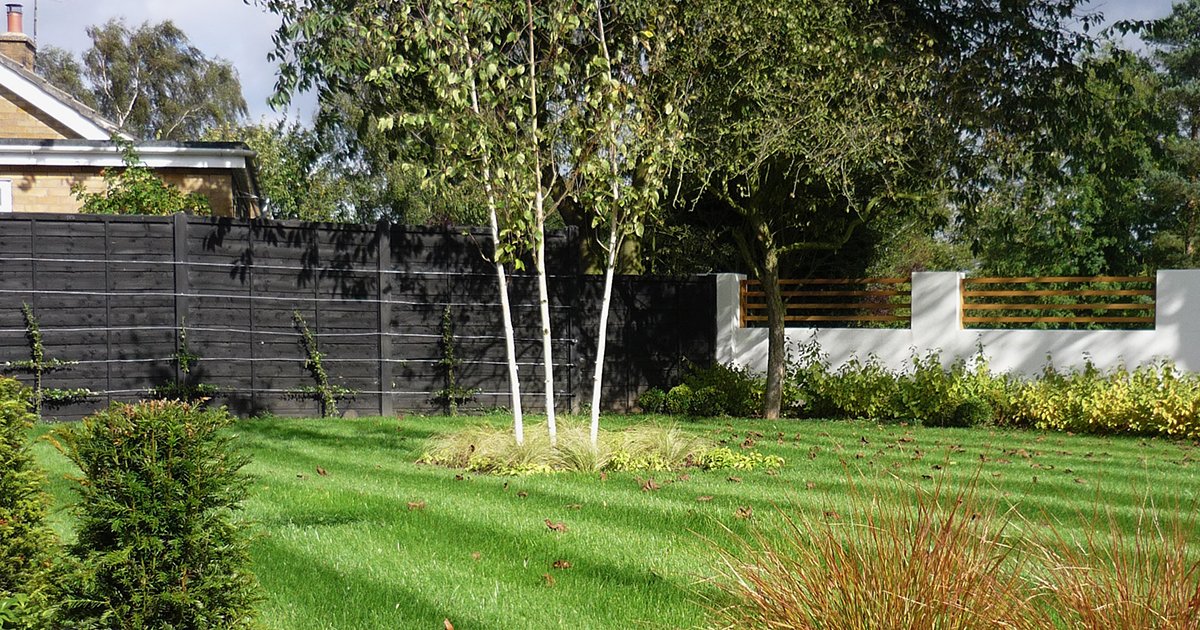How To Create Privacy In Your Garden
Garden privacy is crucial to enjoying your garden
With either careful planting or simply good design it is possible to make your garden more private or feel less overlooked by your neighbours. Essentially there are three main methods achieve this.
Install fences
A fence will create an immediate, solid barrier around your garden. However there are some points to consider before going down this route. A fence is a visually dominant feature and can draw your eye to it immediately (especially just after it has been erected) - and then your eye will wander over the fence to your neighbour’s gardens and their windows.
This visual dominance can be lessened by painting the fence a dark colour (or using charcoaled timber - the Japanese call this Shou Sugi Ban). My preference is always for a black finish, as any planting in front of a black fence stands out and your eye is then drawn to the plants rather than the fence.
A couple of practical points when installing fencing. Most importantly is to ensure that the fence line is yours to change! If it isn’t you can still install a fence but it would need to be within your garden rather than on the boundary. Crucially you also need to understand that although garden fences can be up to 2m in height, when measured from the existing ground level (except in front gardens where they can be only 1m high), a high fence in a small garden can reduce sunlight (for you or your neighbour) and so should be erected considerately. This is why people commonly add trellising or slats at the top of a fence to ensure light continues to flow into both gardens.
Plant trees or hedging
For those with sufficient budget a boundary planting of pleached trees (which I often describe as hedges on stilts) can create instant screening at eye level. Alternatively a hedge can be planted on the boundary - although with this option it may take time for the hedge to achieve the desired height. UK law does state that hedges may be considered as anti-social where they are more than 2m high and unreasonably restrict light to a property and so again they should be installed considerately.
Both pleached trees and hedges will require pruning between September and February to keep the plants looking good and providing an effective screen (this is the best time for the plants and to avoid disturbing nesting birds).
A final option may simply be to plant trees within the garden so that they will break up the views into and out of the garden. This can be highly effective, keeps maintenance low, and maximises biodiversity. It does however need sufficient room for the selected trees to reach their final mature heights and spreads. Ensure that trees are not planted too close to any buildings and where possible select then to give interest across a number of seasons (for example blossom in spring, leaf colour and fruits in autumn, or bark interest in winter, for example). Selections of apples (Malus), rowans (Sorbus), flowering cherries (Prunus), Serviceberry (Amelanchier), or even a Japanese Maple (Acer palmatum) may be good choices to consider if your soil allows.
Create a more interesting garden
The final option is to create a much more interesting garden to look at (with creative garden design) - so that your eyes naturally don’t stray beyond the boundaries of your own space. This is where a great garden design, possibly from a great garden designer, is essential to achieving your goal. A visually captivating garden will ensure that feelings of a lack of privacy are secondary to the joy of spending time in your garden and revelling in its beauty.


